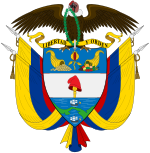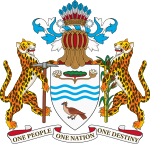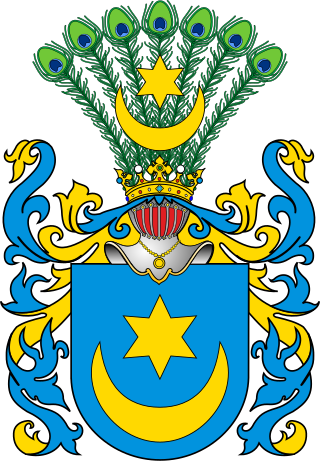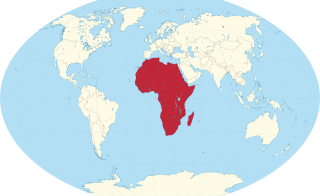
This is a list of the national coats of arms of South American countries.

This is a list of the national coats of arms of South American countries.
| State | National emblems / Coat of arms | Motto / Text | Main article |
|---|---|---|---|
| Argentina |  | none | Coat of arms of Argentina |
| Bolivia |  | Bolivia | Coat of arms of Bolivia |
| Brazil |  | República Federativa do Brasil - 15 de Novembro de 1889 Federative Republic of Brazil - 15 November 1889 | Coat of arms of Brazil |
| Chile |  | Por la razón o la fuerza By reason or by force | Coat of arms of Chile |
| Colombia |  | Libertad y Orden Liberty and Order | Coat of arms of Colombia |
| Ecuador |  | none | Coat of arms of Ecuador |
| Guyana |  | One People, One Nation, One Destiny | Coat of arms of Guyana |
| Paraguay |  | Republica del Paraguay Republic of the Paraguay | Coat of arms of Paraguay |
| Peru |  | none | Coat of arms of Peru |
| Suriname |  | Justitia, Pietas, Fides Justice, Piety, Fidelity | Coat of arms of Suriname |
| Uruguay |  | none | Coat of arms of Uruguay |
| Venezuela |  | 19 de Abril de 1810 - Independencia 20 de Febrero de 1859 - Federación República Bolivariana de Venezuela April 19, 1810 - Independence February 20, 1859 - Federation Bolivarian Republic of Venezuela | Coat of arms of Venezuela |
| Dependency / Territory | National emblems / Coat of arms | Motto / Text | Main article |
|---|---|---|---|
| Aruba |  | none | Coat of arms of Aruba |
| Bonaire |  | none | Coat of arms of Bonaire |
| Curaçao |  | none | Coat of arms of Curaçao |
| Falkland Islands |  | Desire the Right | Coat of arms of the Falkland Islands |
| French Guiana |  | Fert Aurum Industria - 1643 Work Creates Abundance - 1643 | Coat of arms of French Guiana |
| Juan Fernández Islands |  | none | Coat of arms of the Juan Fernández Islands |
| South Georgia and the South Sandwich Islands |  | Leo Terram Propriam Protegat Let the lion protect its own land | Coat of arms of South Georgia and the South Sandwich Islands |
This armorial of sovereign states shows the coat of arms, national emblem, or seal for every sovereign state. Although some countries do not have an official national emblem, unofficial emblems which are de facto used as national emblems are also shown below.

An officer of arms is a person appointed by a sovereign or state with authority to perform one or more of the following functions:
In heraldry, an armiger is a person entitled to use a heraldic achievement either by hereditary right, grant, matriculation, or assumption of arms. Such a person is said to be armigerous; a family or a clan likewise.

Leliwa is a Polish coat of arms. It was used by several hundred szlachta families during the existence of the Kingdom of Poland and the Polish–Lithuanian Commonwealth, and remains in use today by many of the descendants of these families. There are several forms of the arms, all of which bear the name, Leliwa, but which may be distinguished as variations of the same arms by the addition of a Roman numeral. In 19th century during a pan South-Slavic Illyrian movement heraldic term Leliwa also entered Croatian heraldry as a name for the coat of arms considered to be the oldest known symbol; Bleu celeste, a mullet of six points Or surmounted above a crescent Argent – A golden six-pointed star over a silver crescent moon on a blue shield, but also as a name for all other coats of arms that have a crescent and a mullet.

Armorial ware or heraldic china are ceramics decorated with a coat of arms, either that of a family, or an institution or place. Armorials have been popular on European pottery from the Middle Ages with examples seen on Spanish Hispano-Moresque ware, Italian maiolica, slipware, English and Dutch Delft, and on porcelain from the 18th century. Earlier examples were mostly large pieces such as jugs or basins and ewers, but later whole table services, all painted with the arms, were produced.
This overview contains the flags of dependent territories and other areas of special sovereignty.

A roll of arms is a collection of coats of arms, usually consisting of rows of painted pictures of shields, each shield accompanied by the name of the person bearing the arms.
"Carolina" is the official state song of South Carolina since 1911. In 1984, it was joined by "South Carolina On My Mind".
This is a list of the national coats of arms or equivalent emblems used by countries and dependent territories in Europe.

African countries have the following coats of arms or national emblems:

Below is a list of national emblems and coats of arms used by Asian countries, territories and regions.

Countries and territories in Oceania have the following emblems and national coats of arms:
Hugh Birley was a British businessman and Conservative politician.

This is a list of the coats of arms of North American countries.

Frucourt is a commune in the Somme department in Hauts-de-France in northern France.

Fojnica Armorial is a prominent Illyrian armorial which contains South Slavic heraldic symbols. The manuscript is named after the Franciscan monastery in Fojnica where it was kept.

The Korjenić-Neorić Armorial is a 1595 copy of the lost original of the Ohmučević Armorial commissioned by Petar Ohmučević, a Spanish admiral of Ragusan origin, at some point between 1584 and 1594. It is an example of the earliest ("Interconfessional") form of Illyrism, which formed the ideological basis for the later rise of South Slavic nationalism in Southeast Europe.
Most prime ministers of the United Kingdom have enjoyed the right to display coats of arms and to this day, prime ministers have their ancestral arms approved, or new armorial bearings granted, either by the College of Arms or the Lyon Court.
The Illyrian Armorials are a group of armorials compiled from mainly fictional medieval coats of arms, among which there can be found several actual coats of arms, during the late 16th to mid 18th century. They are all copies based on alleged lost original of the Ohmučević Armorial, commissioned by Petar Ohmučević, a person of Ragusan origin, who went to become an admiral of Spanish court and navy at some point between 1584 and 1594. It is an example of the earliest ("Interconfessional") form of Illyrism idea and notion of so-called "Illyrian Empire", which formed the ideological basis for both the later rise of nationalism in the Balkans among its South Slavs, and the idea of unification into one state that in later times took a form of Yugoslavia.